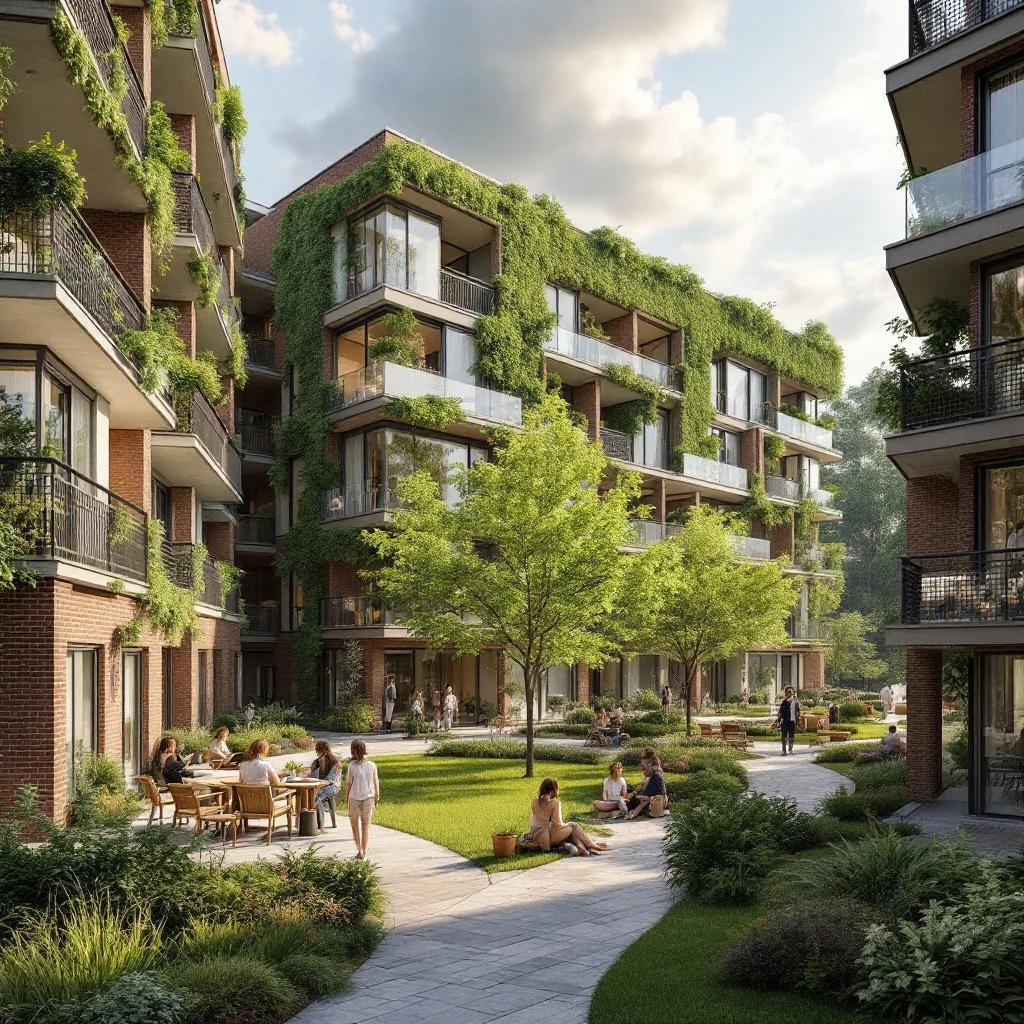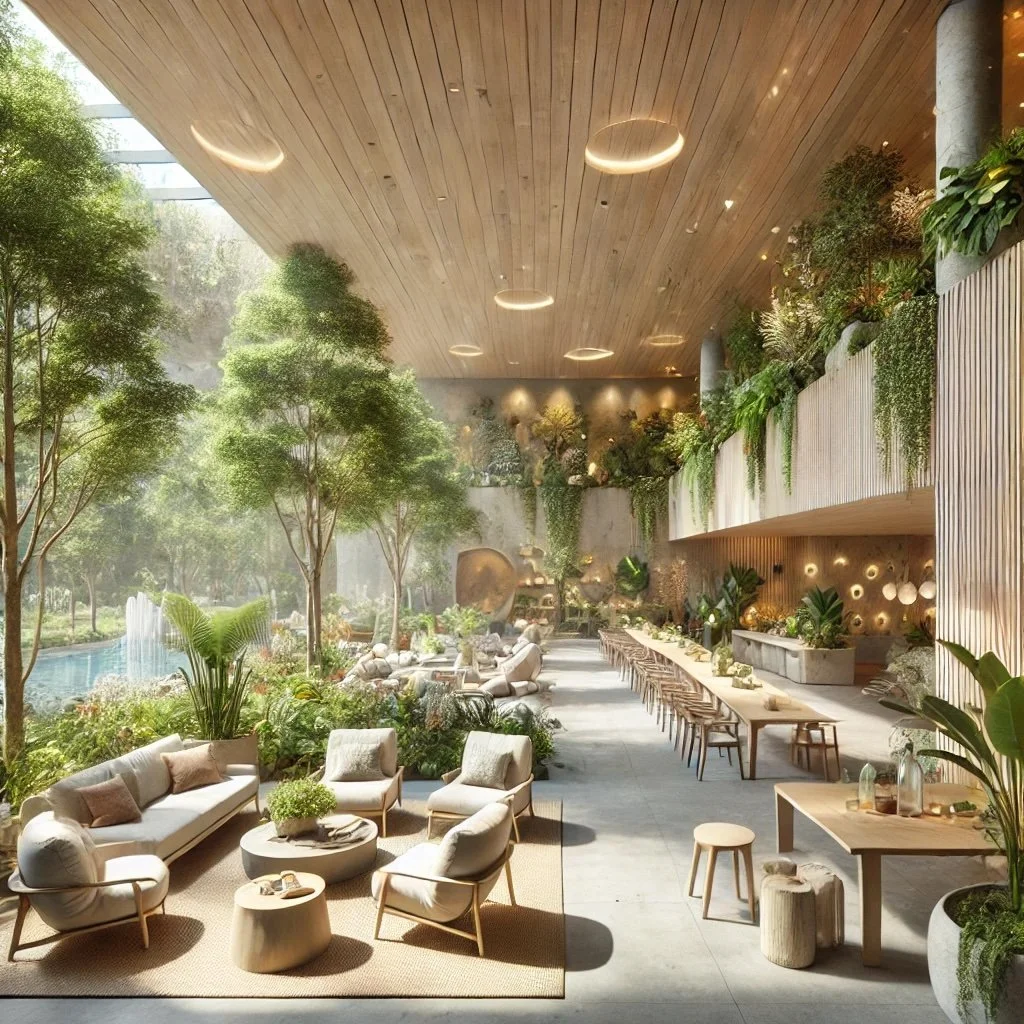
Blog
In a world that moves fast and builds even faster, how do we ensure that our spaces don’t just sustain us, but truly help us thrive? The THRVE Blog is your gateway to exploring the powerful intersection of holistic design, urban sustainability, and community well-being. Here, we dive deep into the pressing issues of our time—climate justice, regenerative cities, social equity, and the future of wellness-centered design. Through thought-provoking articles, expert insights, and inspiring case studies, we uncover how the spaces we create can heal, reconnect, and empower. Whether you’re a designer, an activist, or simply someone passionate about shaping a better world, this blog invites you to engage, learn, and take action. Because the future of our communities isn’t just something we dream about—it’s something we build, together.
Wellness is the Future
-
What is the Wellness Trend in 2025?
The wellness trend brings the focus of interior design back to a simpler, more immediate intimate and people centric view with more focus on lifestyle.
As interior designers, we aim to design spaces and experiences that make our clients happy healthy and whole.
We are spearheading the mind shift from sustainable design to regenerative design, adopting the latest scientific findings and highlighting the importance of nature, so we can deliver meaningful, holistic experiences that enrich the well-being of our clients, and our communities..
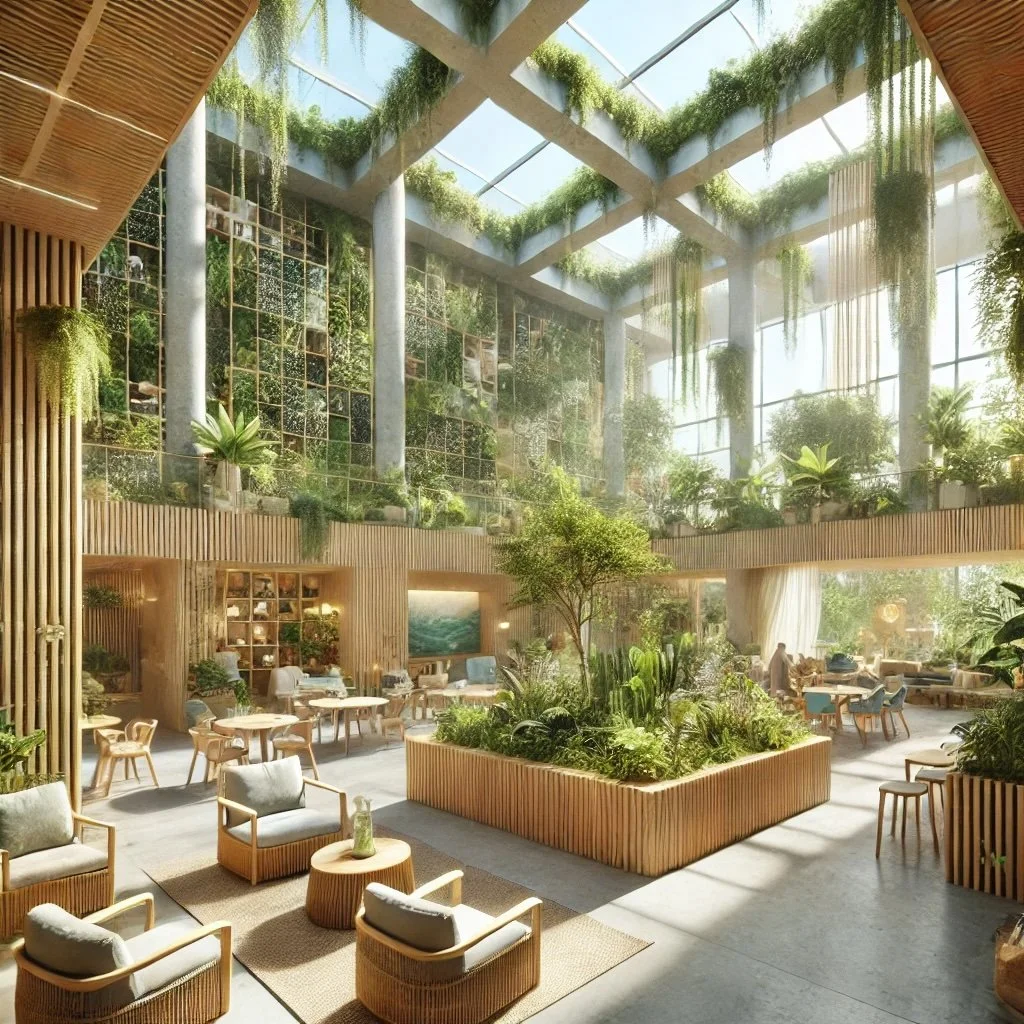
-
Socially conscious, harmonized interiors, that inspire Well-Being.
Designing for well-being is where the physical, psychological, social, and ecological aspects intertwine to create environments that focus on enhancing well-being, promoting happiness, and ensuring longevity in the various spaces and communities we inhabit, work, and engage in recreational activities. Biophilic design introduces an additional crucial element to our thinking about sustainability, as well as our understanding of human health and overall well-being, particularly within sustainable and regenerative spaces that foster a harmonious relationship between people and nature.
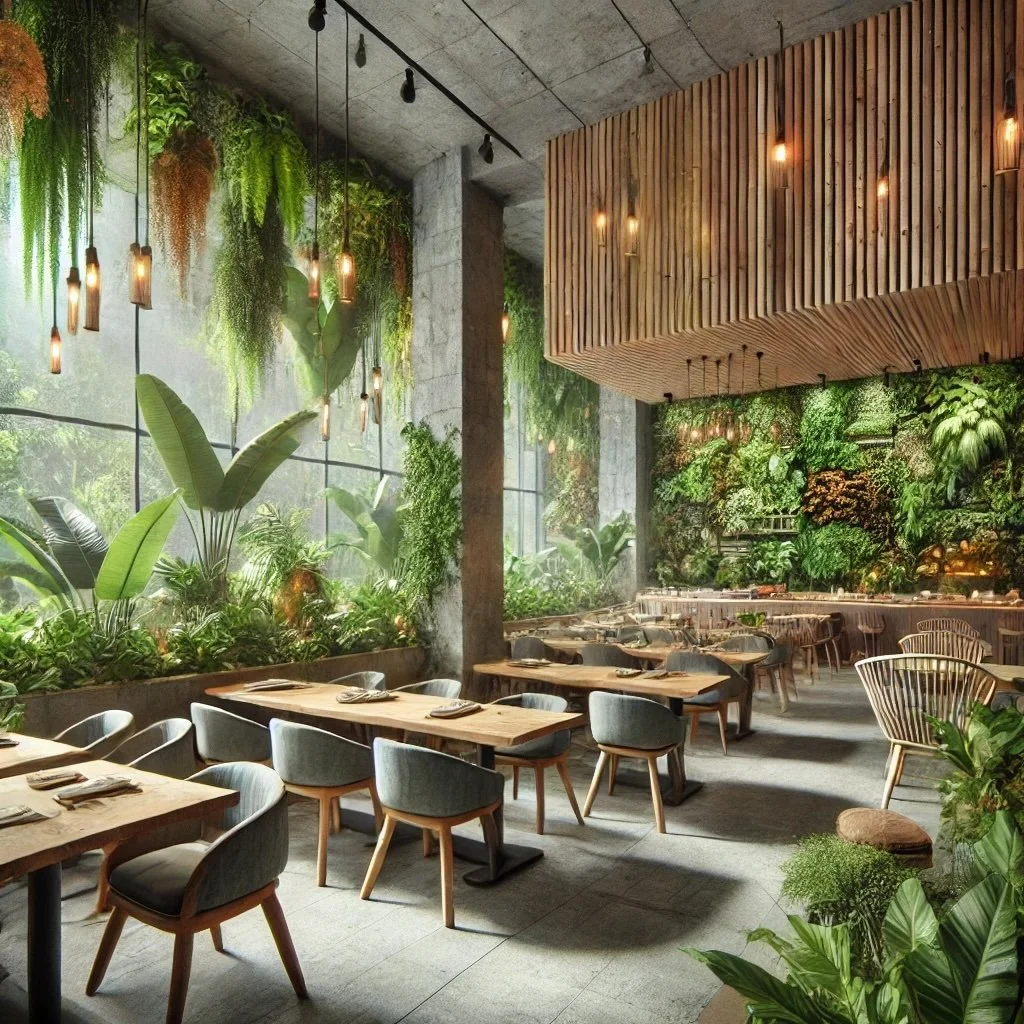
-
How do Interior Design & Well-Being relate to each other?
Interior design and well-being are deeply interconnected, as the spaces we inhabit have a profound impact on our physical health, mental clarity, and emotional balance. Thoughtful design choices can enhance mood, reduce stress, and improve overall wellness. Colours, textures, spatial flow, and materials influence how we feel and interact within a space, shaping our daily experiences. By prioritizing sustainable, nature-inspired, and human-centred design, interiors can become sanctuaries that support relaxation, creativity, and a holistic sense of well-being for ourselves and community.
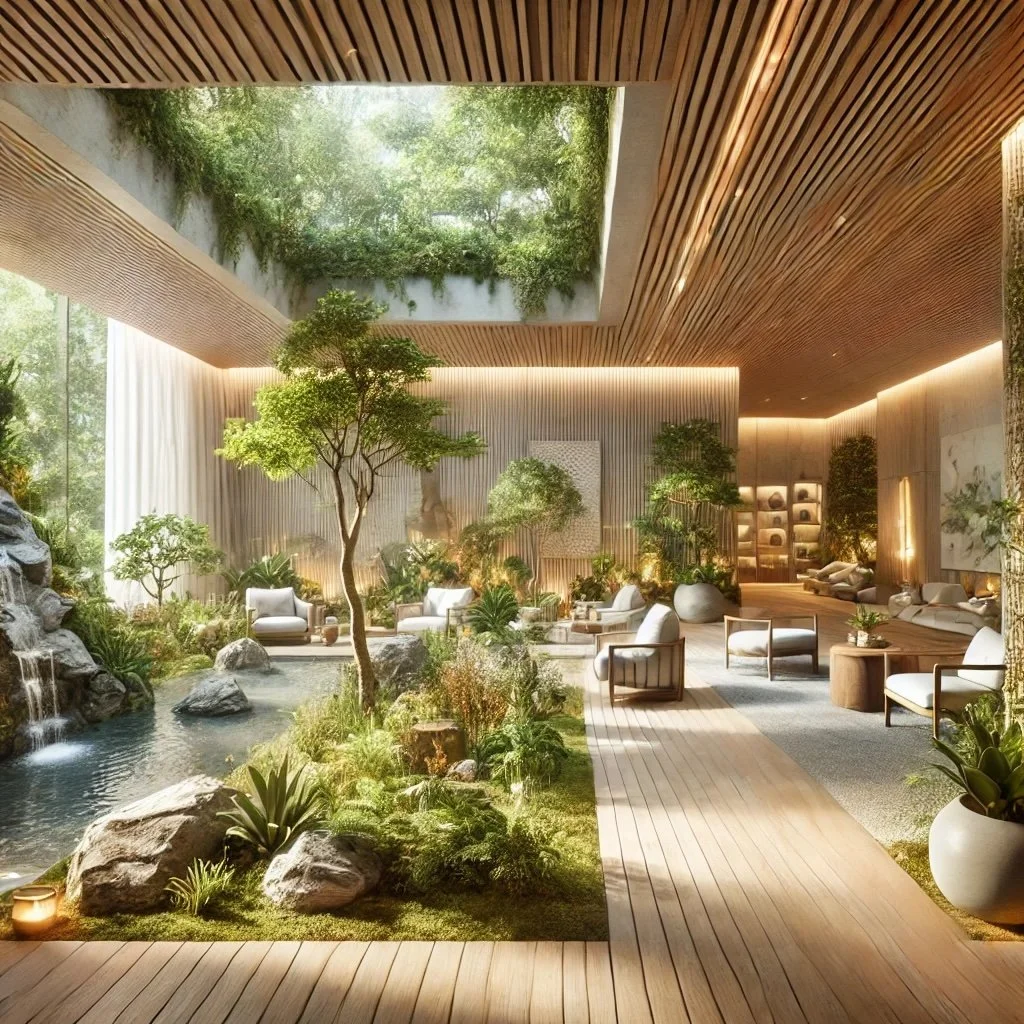
-
Spirituality & Design
Spiritual Interior Design is the philosophy of creating balanced spaces. Balancing and harmonizing beauty, design aesthetics, function, natural elements, spatial energy and sustainability. When done properly the balanced space emits a high vibration of peace and well-being.
Our holistic interior design approach to health and well-being addresses the needs of the human spirit, however, we also address diet, exercise, consciousness, emotional wellness, and life choices to protect the long-term well-being of our clients.
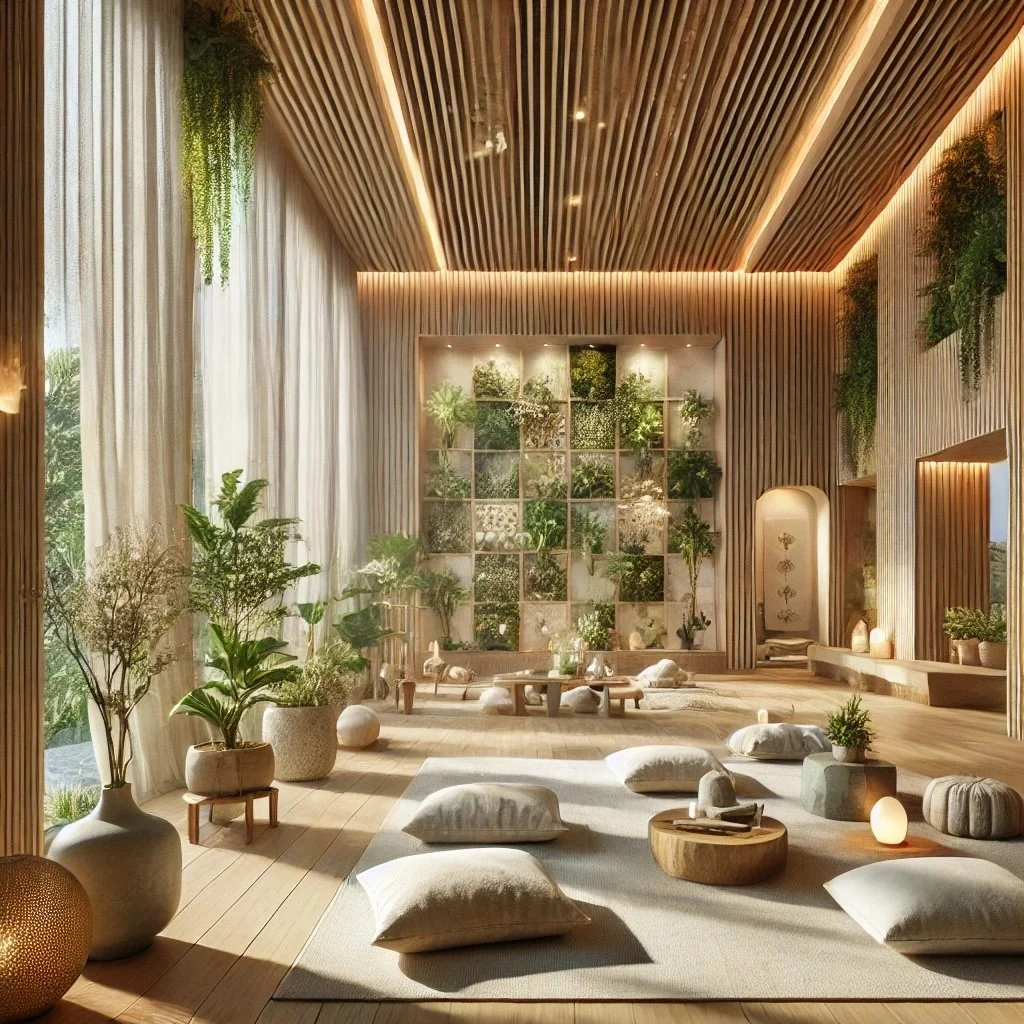
-
Incorporating Natural Elements to Support Well-Being.
Given how quickly an experience of nature can elicit a restorative response, and the fact that billions of dollars are lost each year due to stress-related illnesses, design that reconnects us with nature is essential for providing people opportunities to live and work in healthy places and spaces with less stress and greater overall health and well-being. By weaving nature into the built environment, we not only enhance individual wellness but also create more resilient, productive, and thriving communities.

-
Interior Design as an Investment in your Wellness
We use a combination of additional practices such as feng shui, hygge, and vastu to create environments that are intentionally crafted to support your overall well-being. Our primary aim at the end of the day is to design environments that inspire, restore, and uplift the human beings who occupy them. We see interior design as a powerful investment in your wellness—just like nourishing your body with organic food, prioritizing movement, or practicing mindfulness, because the spaces you live and work in should actively support your happiness, health, and success every single day.
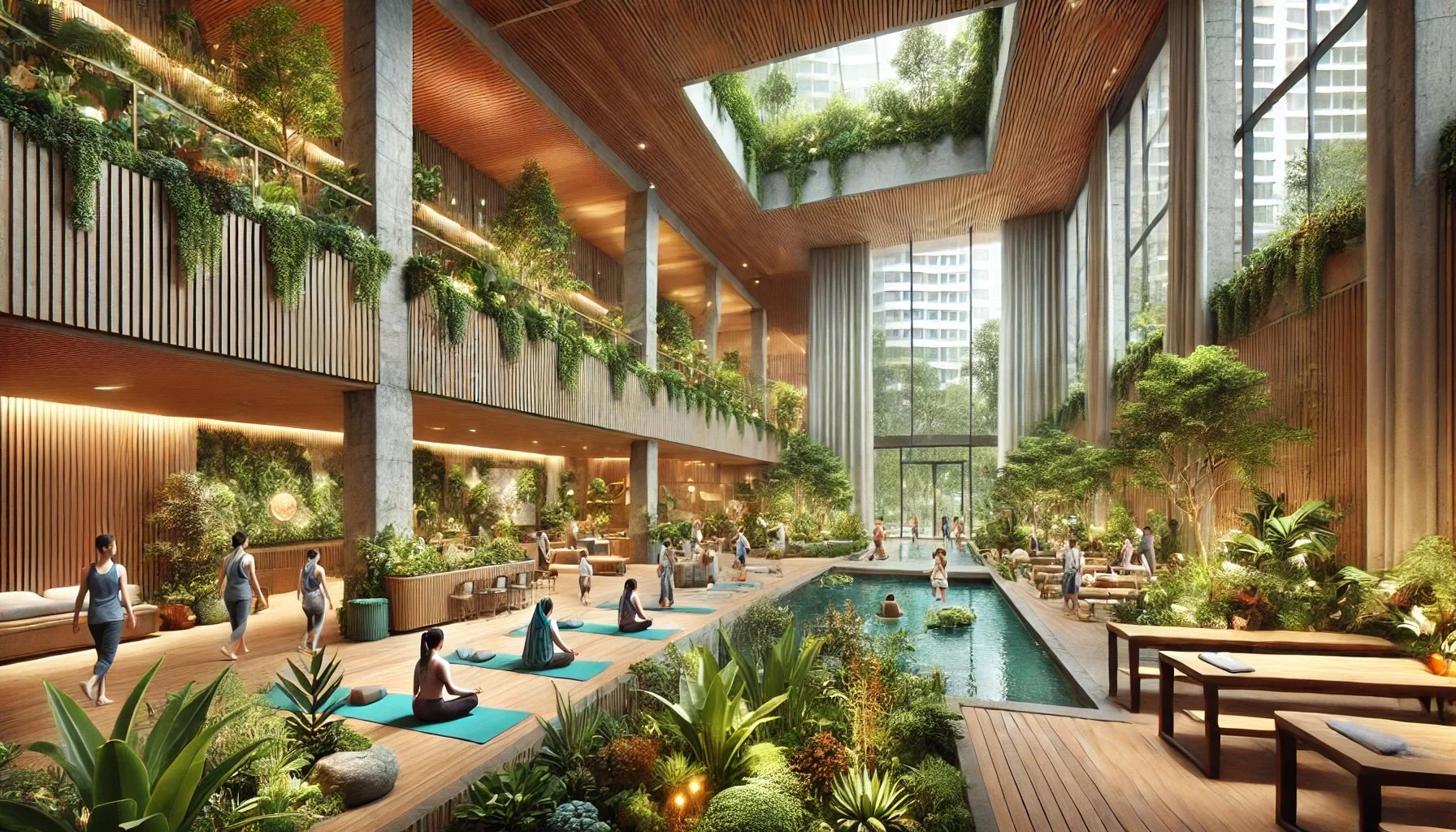
Designing WELL
Health and WELL-being in the Built Environment
Nature Inspired Design
It's important to consider two main perspectives on this topic. Firstly, people's health is closely tied to the environment and the effects of climate change. On the other hand, where we live also has a big impact on our health. Ignoring these factors would only make things worse. Climate change has a significant impact on human health and well-being. Ecopsychology looks at how people's connection to nature affects their mental health. The negative effects of climate change are making many people feel very anxious. Effective solutions involve taking action and connecting more with nature to reduce feelings of helplessness and anxiety. A survey found that many teachers and students feel anxious about climate change. Most people are worried about plastic pollution, losing plant and animal species, and climate change. People want to learn how to live in a way that doesn't harm the environment, but they believe the government needs to make big changes.
The Impact of Pollution on Our Health
Our physical health is greatly affected by pollution. EnvironmentCanada Agency estimates that 13% of deaths in Canada are linked to some form of pollution. According to the World Health Organization, around 4.2 million people worldwide die prematurely from outdoor air pollution annually and nine out of ten people breathe highly polluted air. Moreover, recent research has discovered a link between COVID-19 deaths and air pollution.
The Influence of the Built Environment
Due to urban living, we now spend about 90% of our time indoors, whether at home, in our cars, on public transport, at work, in cafes, bars, restaurants, or gyms. Research has shown that the spaces we occupy have a significant impact on both our physical and psychological health and well-being.
Air pollution causes 7 million early deaths worldwide each year. Indoor air can be more polluted than outdoor air. 93% of 16-64-year-olds in Canada use smart technology. Excessive screen time can disrupt sleep, leading to health issues. Many household activities introduce harmful air pollutants like carbon monoxide, fine particulate matter, damp, mold, and VOCs. Damp and mold, often due to poor heating and ventilation, affect around 20% of buildings in some countries and can lead to health problems like asthma. A significant amount of heat is lost through roofs, windows, doors, walls, and the ground. Cold homes can cause more winter deaths and increase cardiovascular and respiratory diseases, particularly in children.In terms of energy consumption at home, if we make even relatively simple sustainable home improvements such as insulation, we can create more energy efficient, controllable homes that can help both the planet and our physical and psychological well-being. So, looking to our homes is paramount, as clearly there is room for improvement. It is here that we as individuals can make a difference, and future-proofing our homes is more important now than ever, so that we can live well whitin the spaces that we are spending much more of our time.
Biophilia..Wellness by Design
Biophilic design is an approach to design that incorporates elements of nature into built environments. It aims to enhance the well-being of individuals by reconnecting them with nature, especially in urban settings where people are increasingly distanced from natural environments. This design approach is relevant now because as urbanization has increased, stress rates have also risen. Research has shown that exposure to nature can help reduce stress and improve overall well-being.
By incorporating nature-inspired elements, such as direct contact with nature, references to nature, and mimicking natural environments, biophilic design seeks to create positive and human-centered spaces. This approach can benefit building occupants by improving their well-being, increase employee productivity for businesses, and enhance return rates for clients. It is important to explore and promote the implementation of biophilic design principles to create more accessible and sustainable spaces that prioritize human health and the natural environment.
Biophilic Design is a concept that recognizes the innate human desire for a connection with nature and explores how incorporating natural elements into our built environments can enhance our physical and mental well-being. Scientific research has extensively studied this desire and its impact on our overall health. The theories behind Biophilic Design explain how certain elements in our surroundings, such as natural light, vegetation, and water features, can elicit positive physical and psychological responses.
By incorporating these elements into our built environments, Biophilic Design aims to create spaces that promote relaxation, reduce stress, and improve cognitive function. This approach recognizes the importance of our relationship with nature and offers opportunities to be creative in designing spaces that fulfill our need for a nature connection.
Implementing Biophilic Design principles can have numerous benefits, including increased productivity, improved mood, and enhanced overall well-being. It is an evolving field that continues to be explored and refined through ongoing research and application.
The Future of Human Centred Design
The Future of Human Centred Design
Not every aspect of Biophilic Design has been extensively studied and supported by evidence. As an innovative and emergent approach to design, ongoing projects are actively gathering data to better understand the effects of Biophilic Design on health, well-being, and productivity. Projects aim to measure the benefits of different levels of Biophilic implementations through pre- and post-occupancy studies over a two-year period.
The research conducted in projects has the potential to contribute to the development of design standards and building codes. As governments and individuals become more aware of issues such as air quality and their impact on human health, Biophilic Design can play a significant role in reintroducing nature and its benefits into the urban environment.
The recognition of Biophilic Design's positive effects on psychological well-being has led to its inclusion in human-centered building standards like the WELL Building Standard.
The architecture and design community is increasingly adopting Biophilic Design principles, and there are exciting developments in materials and technologies that mimic nature, both real and virtual.
FREE BONUS
Get Your Ultimate Biophilic Home Checklist - Create a Home That Heals & Inspires
Create a Healthier, Sustainable, and Nature-Inspired Home Today!
Sign up to receive your FREE Ultimate Biophilic Home Checklist + exclusive wellness design tips!
Transform your space into a sanctuary of well-being
Learn biophilic & regenerative design secrets
Get insider sustainability hacks for a greener home
Enter your email to get instant access!
Get the Free Checklist
You’ll also receive special offers & exclusive content from Andrea Leja!
Let’s Create Spaces That Inspire and Thrive
Every space has the power to nurture life, foster connection, and leave a lasting legacy. Whether you’re looking to integrate biophilic design, embrace sustainability, or craft environments that enhance well-being, we’re here to help bring your vision to life.
Reach out to us—let’s start the conversation.
We can’t wait to hear from you! Send us a message using the form below, and we’ll get back to you as soon as possible. Together, we can design a healthier, more sustainable future—one space at a time.

“The greatest threat to our planet is the belief that someone else will save it.”


